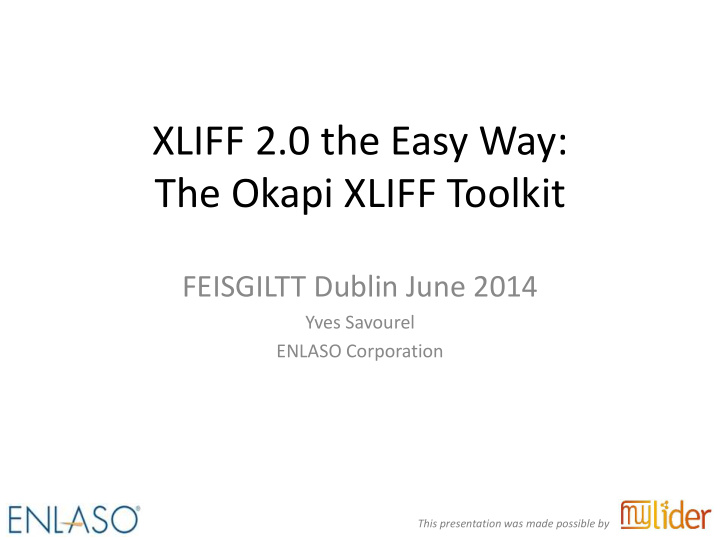



XLIFF 2.0 the Easy Way: The Okapi XLIFF Toolkit FEISGILTT Dublin June 2014 Yves Savourel ENLASO Corporation This presentation was made possible by
In a few words • Goal: Facilitate creating, reading, manipulating and writing of XLIFF 2.0 files. • Part of the Okapi Framework projects: Open-source (LGPL), free, cross-platform (Java 1.7 or later) • Implements: the Core, the Translation Candidates module and the Glossary module • Allows modules/extensions manipulation too
Event-driven reader/writer START_DOCUMENT <?xml version="1.0"?> START_XLIFF <xliff ... > <file id="f1"> START_FILE <skeleton href="myFile.skl"/> SKELETON <notes> <note id="n1">note</note> MID_FILE </note> <group id="g1"> START_GROUP <unit id="u1"> <segment> UNIT <source>text</source> </segment> END_GROUP </unit> </group> END_FILE </file> END_XLIFF </xliff> END_DOCUMENT
A few links • Okapi XLIFF Toolkit project: https://code.google.com/p/okapi-xliff-toolkit • Download the latest snapshot: http://okapi.opentag.com/snapshots • XLIFF specification: http://docs.oasis-open.org/xliff/xliff-core/v2.0/xliff-core-v2.0.html • Lynx on-line validator: http://lynx.okapi-xliff.cloudbees.net/validation • Getting Started guide: https://code.google.com/p/okapi-xliff-toolkit/wiki/Getting_Started
Recommend
More recommend